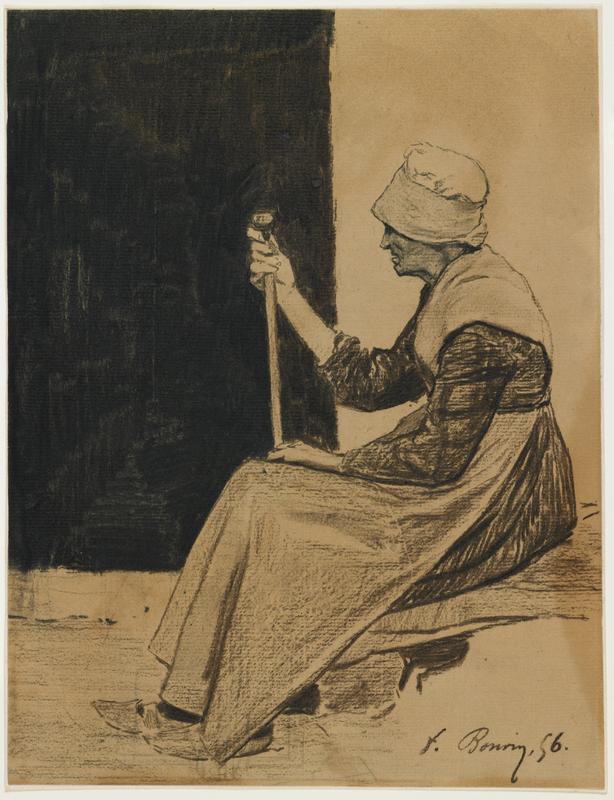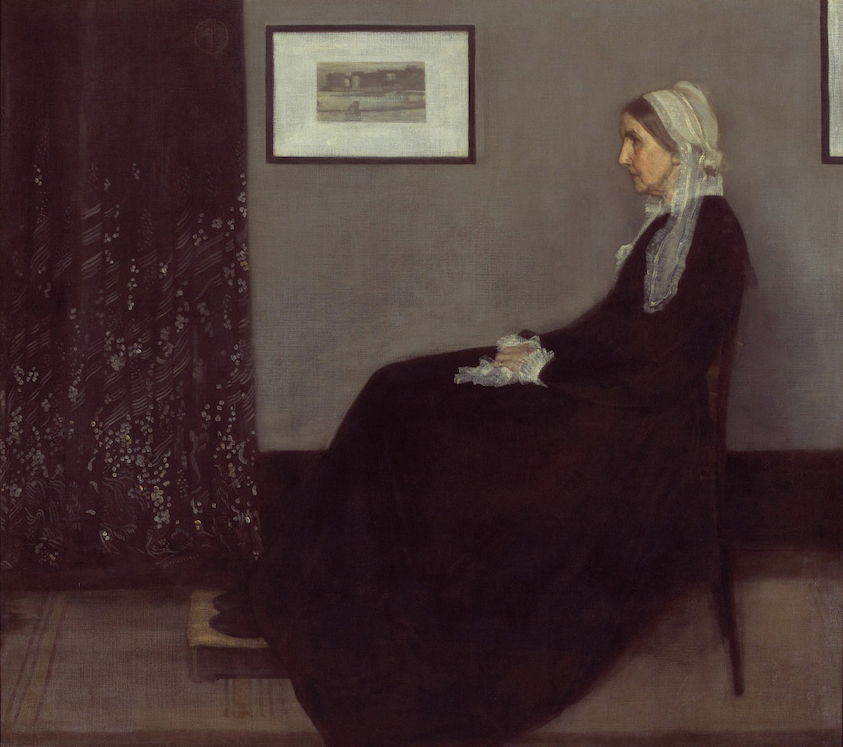
30. François Bonvin, Seated Old Woman Holding a Cane
| Artist | François Bonvin, French, Paris 1817–Saint-Germain-en-Laye 1887 |
| Title, Date | Seated Old Woman Holding a Cane (Vieille femme assise tenant une canne), 1856 |
| Medium | Black and brown chalk on tan paper |
| Dimensions | 11 7/8 × 8 11/16 in. (30.2 × 22.1 cm) |
| Inscriptions + Marks | Lower right: f. Bonvin, 56. |
| Provenance | [Shepherd Gallery, New York]; Mr. and Mrs. Noah L. Butkin, Cleveland, until 1980; gift of Muriel Butkin to Gabriel and Yvonne Weisberg, Minneapolis |
| Exhibition History | "Expanding the Boundaries: Selected Drawings from the Yvonne and Gabriel P. Weisberg Collection," Mia, 2008 |
| References | Gabriel P. Weisberg, "Bonvin," trans. André Watteau (Paris: Éditions Geoffroy-Dechaume, 1979), p. 267, no. 257, ill.; Lisa Dickinson Michaux with Gabriel P. Weisberg, "Expanding the Boundaries: Selected Drawings from the Yvonne and Gabriel P. Weisberg Collection" (exh. cat.), Minneapolis Institute of Arts (Minneapolis, 2008), p. 17, fig. 4 |
| Credit Line | Promised gift of Gabriel P. and Yvonne M.L. Weisberg, Minneapolis |
During the 1850s, François Bonvin produced many drawings similar in size and scale to this one—little bigger than a sheet of typing paper. The motifs are often structured similarly as well: isolated women or men engaged in chores (drawing water, forging iron, preparing food), leisure activities, or a moment of rest. Other times Bonvin portrayed children at school or at home eating their meal. These were slices of everyday life, based on close observation of people he knew. Some of his models, such as this world-weary woman, came to his studio to sit for him. Inspiration for his various representations came from seventeenth-century Dutch art and the paintings of Jean Baptiste Chardin.
Bonvin was well known among other realist artists, including Antoine Vollon (cat. nos. 186–188), Théodule Ribot (cat. nos. 161–167), Henri Fantin-Latour, and James McNeill Whistler. In 1859 Bonvin opened his Paris studio for an exhibition of realist works that were not accepted at the Salon. The gesture made his own art more influential among the young artists he supported.

This drawing seems to foreshadow Whistler’s 1871 Arrangement in Grey and Black No. 1, known as “Whistler’s Mother” (fig. 1). Bonvin seated his model at the right side of the composition and observed her in profile, just as Whistler would do some fifteen years later. Equally telling is Bonvin’s background, with a large, dark, vertical rectangle at the left and a lighter plane of color to the right. Whether Whistler was influenced by Bonvin, even unconsciously, we cannot say. Still, it seems as if the older Frenchman left his mark on the young American.
GPW